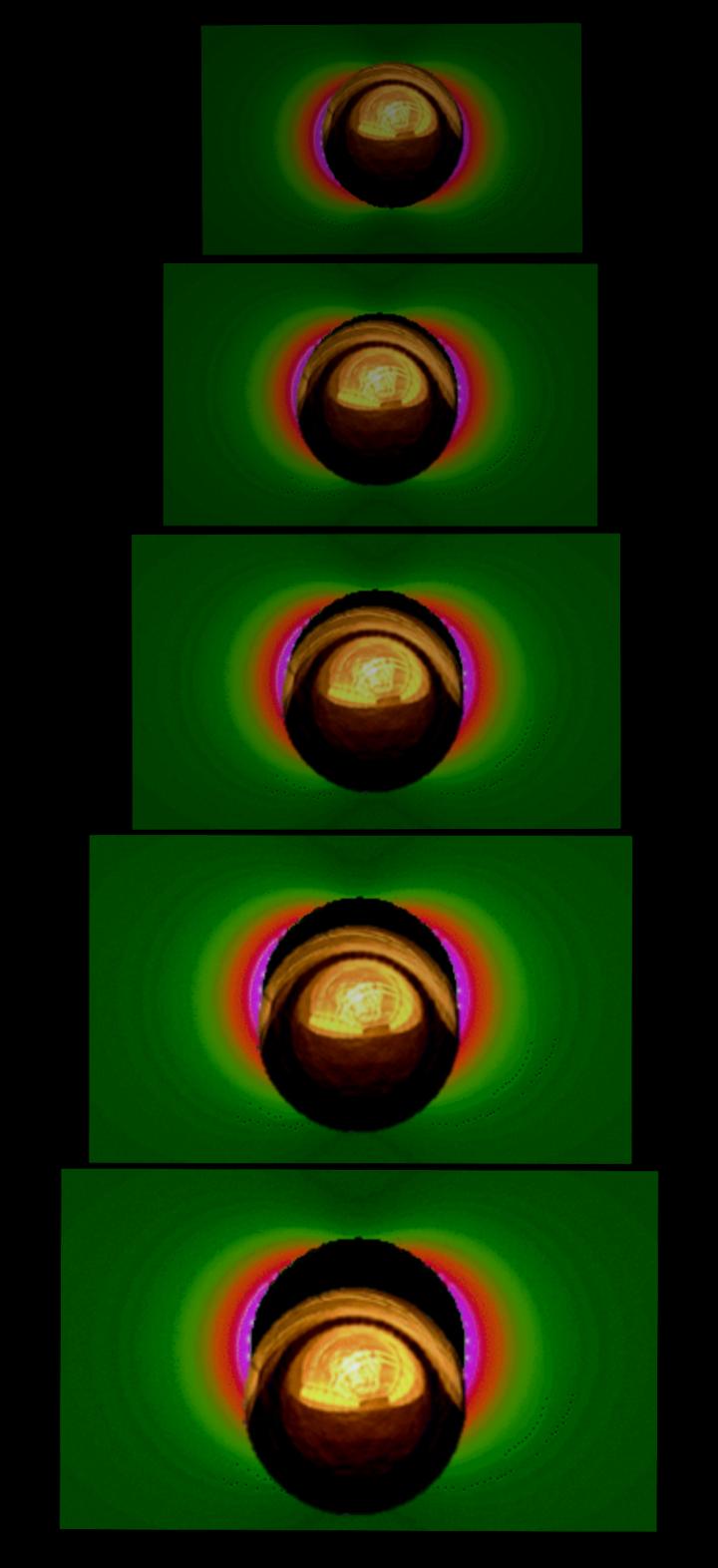Scientists have combined the simplicity of paper with the complexity of quantum physics for point-of-care testing in low-resource environments

Credit: Prof. Eden Morales-Narváez, CIO Mexico
Paper-based diagnostic tests are cheap, convenient and biodegradable. However, their use is limited by conventional dyes – which are not bright enough to show trace amounts of analyte, are prone to fading, and can be environmentally toxic.
Now researchers are using quantum physics to overcome these limitations, says a review published in Frontiers in Bioengineering and Biotechnology. The bizarre optical properties of tiny metal particles – smaller than light waves – can be captured on paper to detect even a single target molecule in a test sample. These hyper-sensitive testing devices could be assembled and customized at the point of use in low-resource environments, with virtually limitless applications spanning medicine, forensics, manufacturing and environmental safety.
“A new generation of paper-based analytical devices is being developed, which use metal nanoparticles for analyte identification,” says lead author Dr. Eden Morales-Narváez of the Center for Optics Research in Mexico. “These will allow low-cost testing in low-resource settings from clinics to crime scenes to contaminated water sources.”
Paper-based diagnostics are smart but not bright
Paper is an ideal medium for cheap, accessible diagnostic devices – and has come a long way already from pregnancy-test-style strips that simply mix a sample with a test chemical.
“Paper devices can filter, concentrate and mix reagents with controlled timing and sequence – by using guidelines that can be scored, drawn or even printed on,” explains Morales-Narváez. “Some groups have even used origami to vary flow direction and add processing steps that allow more sophisticated, duplicate or parallel reactions using a single paper device.”
The real difficulty comes in reading the results of these paper-based tests.
“Test reactions are set up so that if the substance of interest or ‘analyte’ – a biomarker or pollutant, for instance – is present in a sample, a colored pigment is produced or altered.
“The problem is that conventional pigments produce colors by selectively absorbing some wavelengths and simply reflecting others – for example, red ink appears red because it absorbs strongly in the blue and green spectral regions.
“This means that for a visible color change to occur, relatively large amounts of analyte are required. In other words, the test is not very sensitive.”
To make matters worse, the test result cannot be saved as a record because pigments are prone to fading, and in some cases cannot be safely discarded because of pigment toxicity.
A quantum physics solution
What paper-based tests need is an ultra-bright color indicator. Cue metal nanoparticles (MNPs).
“MNPs are can give a brighter, lasting color signal, since they dramatically amplify a particular wavelength of light – rather than simply reflecting it,” sums up Morales-Narváez.
As the name suggests, MNPs are nanometer-sized pieces of metal. At about 10-100 times smaller than light waves, their behavior enters the strange realm of quantum physics.
“Put simply: metals consist of a fixed lattice of positive ions, which share a “cloud” of negatively charged free electrons.
“In nanometer-sized pieces of metal, certain wavelengths of light make these free electrons vibrate with respect to the fixed positive ions in the metal. This vibration amplifies the light, emitting a brighter color.”
Still confused? Remember that light is a visible electromagnetic field. Imagine a cube of metal placed inside this field. Electrons, being negatively charged, will move to positive pole of the field, uncovering positive metal ions at the negative pole. When the field is gone (or rather as it – the light wave – oscillates) the electrons move in the opposite direction, repelled by each other and attracted back towards the uncovered positive metal ions. The electrons oscillate back and forth in this way with the changing polarity of the electromagnetic field.
Ultra-sensitive paper-based diagnotics
Crucially, the particular wavelength that causes the free electrons to vibrate is tuneable – so the color amplified by MNPs depends on their shape, size and spacing, as well as the type of metal and surrounding medium.
As a result, there are various ways to couple a paper-based test reaction to a change in MNP color.
“You can make MNPs that bind the analyte, then let these flow in solution over fixed biorecognition elements on the paper such as antibodies, that also bind the analyte. A positive test will cause the MNPs to accumulate and so change their spacing and surroundings.
“Alternatively, MNPs can be released from a holding molecule when this reacts with an analyte.
“Some analytes can even erode MNPs, causing a color change directly. For example, ammonia and other volatile compounds from food spoilage, or UV radiation from sun exposure.”
The result: ultra-sensitive paper diagnostics.
“MNPs can produce visible color changes at even attomolar concentrations of analyte,” confirms Morales-Narváez.
That’s about 30 molecules per drop of test sample. But if the paper test is read by a special machine rather than the human eye, the sensitivity is even higher still.
“Combined with a scanning technique called Raman spectroscopy, MNPs can report detection of a single molecule of analyte.”
With over 10,000 research articles exploring the use of MNPs published in 2018 alone, it may not be long before quantum physics-powered paper diagnostic devices enter the mainstream.
###
Please link to the original research article in your reporting: https:/
Frontiers is an award-winning Open Science platform and leading Open Access scholarly publisher. Our mission is to make research results openly available to the world, thereby accelerating scientific and technological innovation, societal progress and economic growth. We empower scientists with innovative Open Science solutions that radically improve how science is published, evaluated and disseminated to researchers, innovators and the public. Access to research results and data is open, free and customized through Internet Technology, thereby enabling rapid solutions to the critical challenges we face as humanity. For more information, visit http://www.
Media Contact
Matt Prior
[email protected]
Related Journal Article
http://dx.




